From temperate to sub-tropical, Dive adventures on the Aussie East Coast
Text & Images by ELODIE MARIE CAMPRASSE
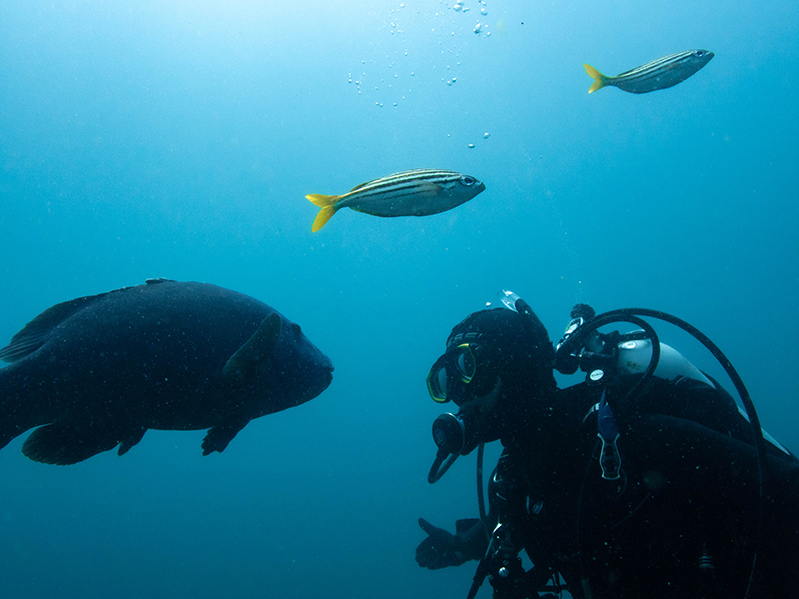
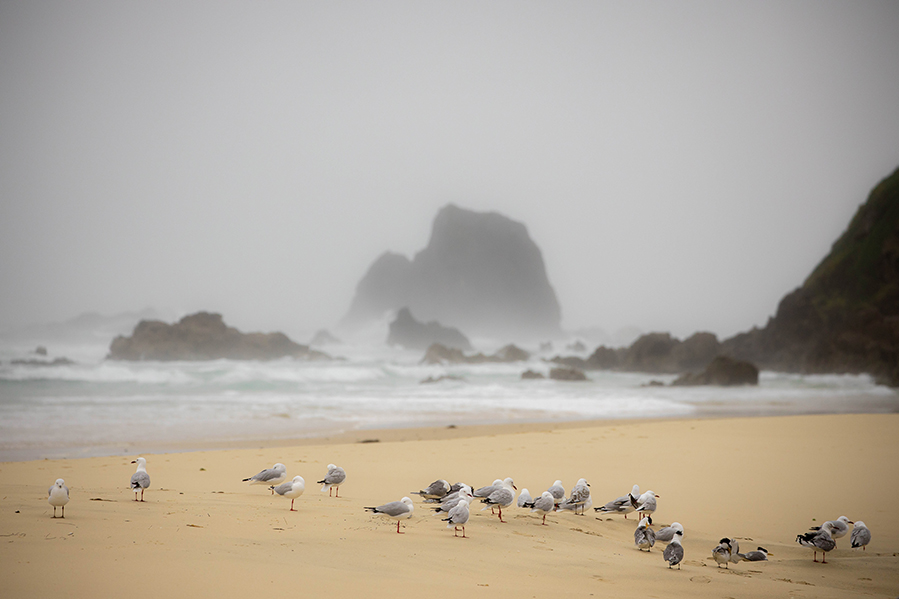
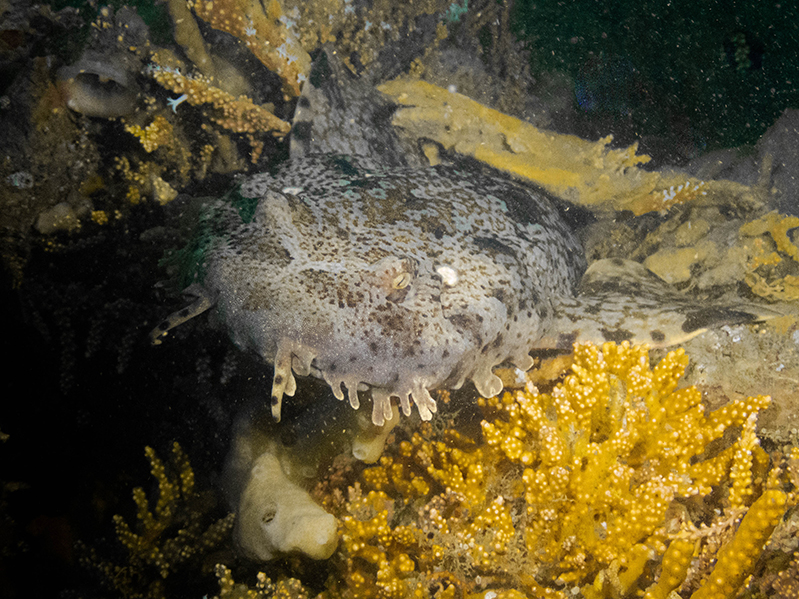
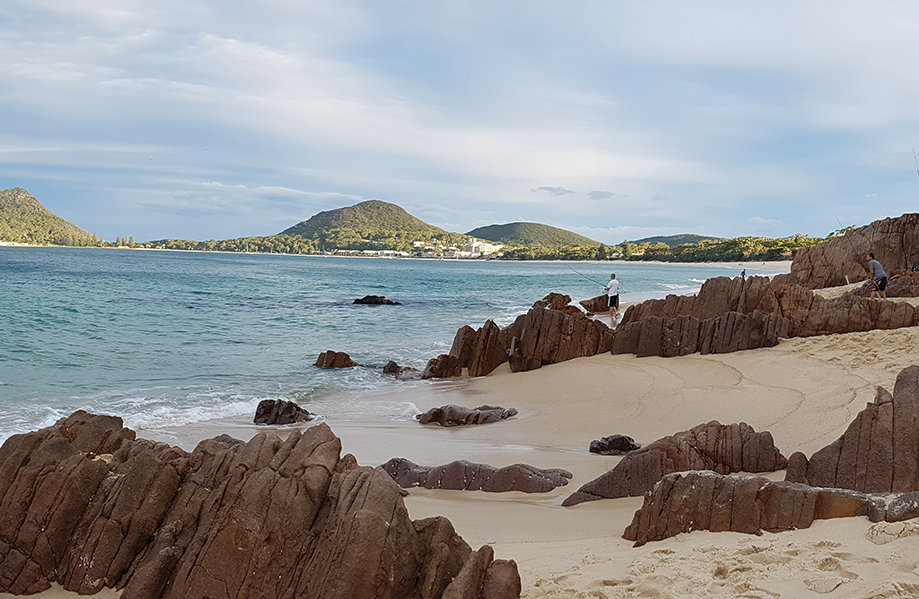
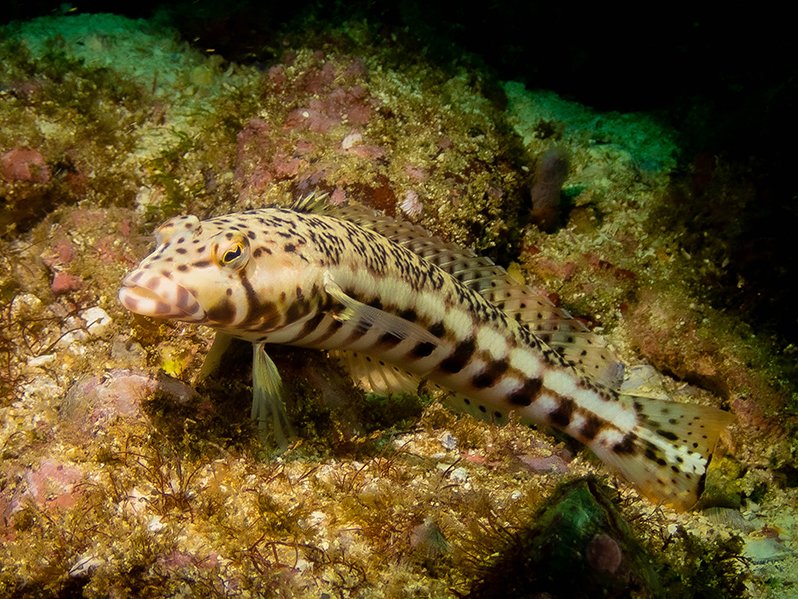
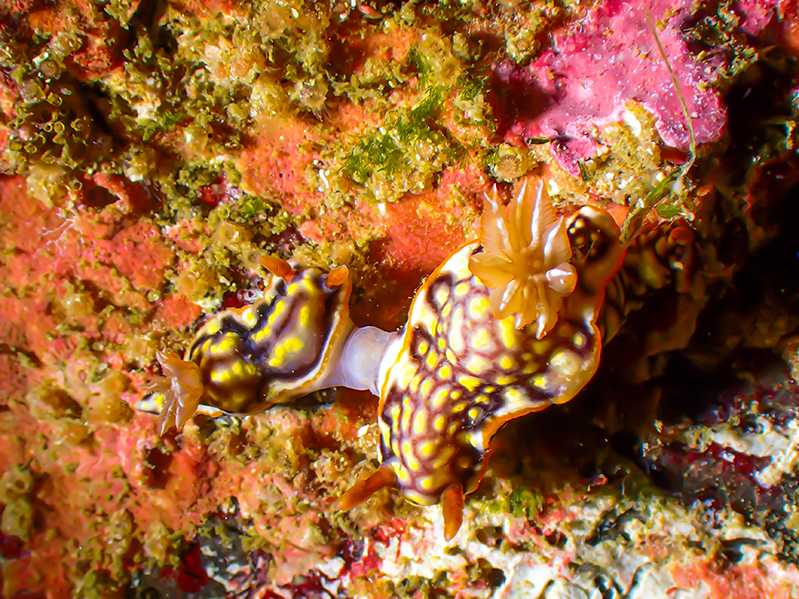
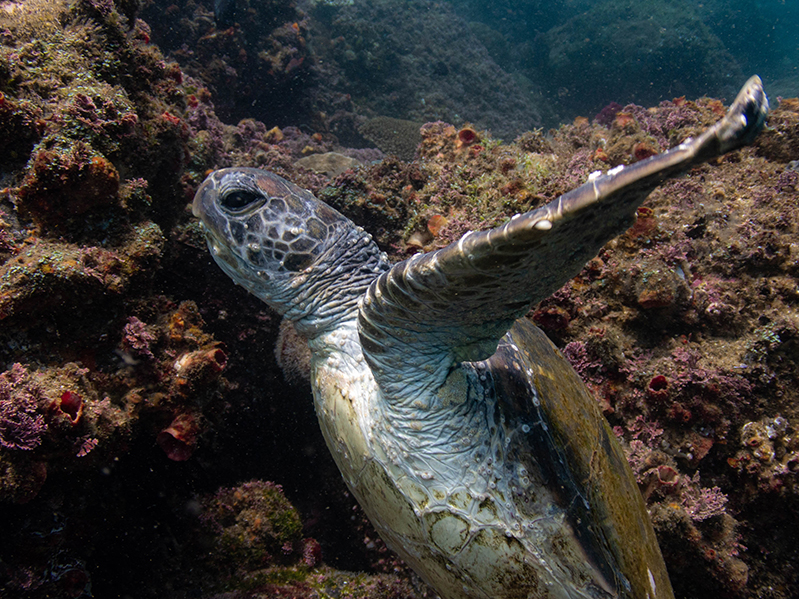




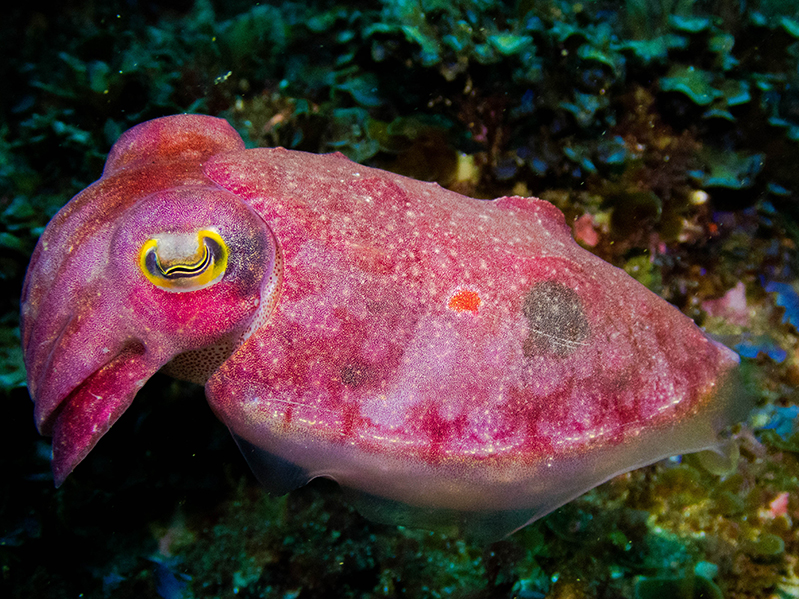
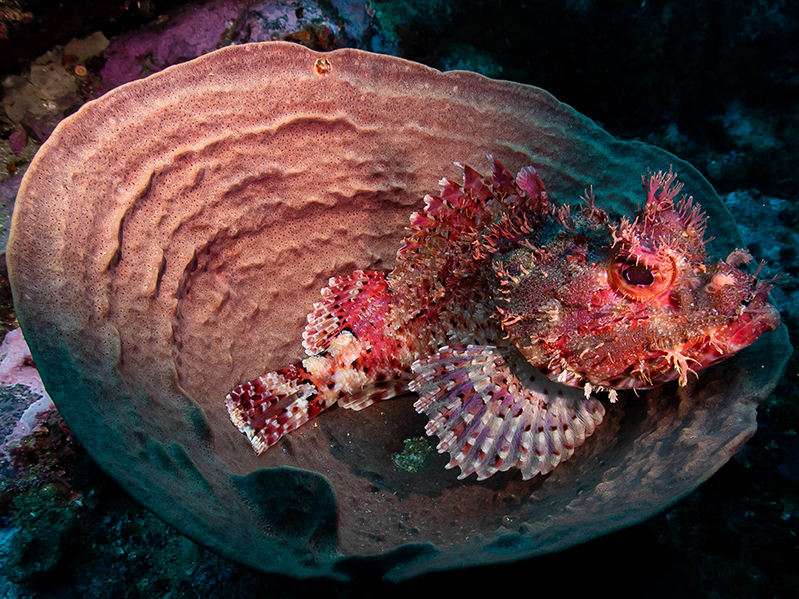
Diving opportunities in Australia are incredibly rich and diverse. What first comes to mind are the beautiful, warm turquoise waters of the Great Barrier Reef.
Having lived in Australia for years now, I am surprised by how much this destination outshines other wonderful scuba dive spots in the country. Ocean lovers get the chance to witness spectacular mating aggregations of giant cuttlefish in South Australia in winter. At the same time of year, spider crabs aggregate in Port Phillip to seek safety in numbers to moult, a spectacle not to be missed. There are year- round opportunities to come face-to-face with ocean giants such as whales, sharks and rays on the beautiful Ningaloo Reef in Western Australia. In Tasmania, divers can enjoy spectacular giant kelp forests, underwater caves and deep-water sponge gardens. New South Wales, on the East Coast of Australia, also offers great diving for all levels and budgets, from easy shore dips to more challenging wreck and boat dives, along more than 2000 kilometres of beautiful coastline.
As much as my partner and I enjoy diving around Melbourne’s beautiful Port Phillip, the East Coast is where we wanted to go next for a change of scenery and to experience diving in warmer waters. We had a whole coastal road trip planned out over Christmas and New Year, starting at the bottom of New South Wales and going all the way to the southern-most part of the Great Barrier Reef. We were excited at the opportunity to witness the change in marine life from temperate to tropical waters and enjoy some of the best dive destinations on the East Coast. Unfortunately, the pandemic forced us to change our plans.
The frustration of not being able to cross the border with Queensland and reach the tip of the Great Barrier Reef settled in when we decided to use the rest of our time to discover more of New South Wales’ excellent dive sites. I couldn’t possibly cover them all, but you’ll find below an overview of beautiful dive opportunities this state has to offer.
Starting from the southern part of New South Wales, we opted to dive at the Merimbula Wharf, which is considered by some as one of the top ten shore dives in Australia. We jumped off the rocky platform to the east of the Pier and enjoyed exploring this reef, with kelp in the shallow part and lovely sponge gardens deeper down, along the pipeline that runs to the south of the pier. Wobbegong and Port Jackson sharks were undoubtedly the highlights of the dive, but divers here can also enjoy big stingrays, seahorses and generally, an abundant fish life.
Next up, we stopped at Narooma, the jewel of the Sapphire Coast and gateway to access Montague Island’s pristine waters. A popular site where you can experience awe-inspiring encounters with playful fur seals all year round and, from November to April, becomes home to one of the southernmost known aggregations of the intimidating yet peaceful grey nurse shark.
Bad weather forced us to cancel our dives so we continued the drive north along the picturesque coastline leading to Jervis Bay, another very popular dive destination south of Sydney where divers can enjoy a range of experiences, including sheltered, shallow dives inside the Bay, and spectacular walls and caves at the base of towering sea cliffs right outside.
Because the visibility was average in the Bay, that’s where we headed. We enjoyed glimpses of a few dolphins from the boat on the way to the dive sites and underwater, a different kind of landscape, with swim throughs, ledges and bommies. Here, we encountered our first grey nurse sharks, and the blue groupers that we would regularly enjoy diving with throughout the trip. The fish life was abundant, but we also enjoying spotting sea slugs, colourful sponges, sea squirts and more.
Next on our list was one of our favourite stops: Shellharbour. Its Bass Point Reserve includes several spectacular shore dive sites including the “Gutter”, where we discovered impressing marine life like colourful sea slugs, octopuses guarding eggs, a sea spider, some cute cuttlefish and a baby weedy seadragon.
There were exciting critters to enjoy wherever we looked, and we were blessed with stunning visibility, which allowed us to fully take in the views of the canyon that runs up west from the entry of the Gutter.
About 100 kilometres north, Australia’s largest city, Sydney deserves a separate trip to explore its numerous dive sites found around the city and its spectacular Bays, magnificent sandstone headlands and the renown white, sandy beaches it harbors. Because our time was limited, we bypassed Sydney to go to Port Stephens where we experienced amazing shore dives in Nelson Bay and boat dives on Broughton Island. We also enjoyed spotting dolphins from the coast on most days. Our favourite dive was the “Pipeline”, on the western side of the Nelson Bay Marina breakwall, one of Australia’s best muck diving sites where the diversity of critters divers can encounter is mind-blowing. We saw so many cuttlefishes we stopped counting, along with octopuses, pipefishes, seahorses and a variety of sea slugs and more. “Shark Gutters”, on Broughton Island, is the domain of grey nurse sharks and we enjoyed watching dozens of them peacefully cruise along. This is where we also had our best interactions with inquisitive and curious blue gropers.
A few hours up the coast, we reached South West Rocks, accessible by boat and famous for dramatic underwater landscapes including gutters and sea caves. This is a great place to spot sharks and other pelagic species, including grey nurse sharks, eagle and cownose rays.
But by far the most thrilling dive site for adventurous divers is the 125-meter-long underwater cavern running through the middle of Fish Rock. Covered by corals, sponges and gorgonians, part of this cave runs from 12 to 24 meters above the surface and is home to an abundant mix of tropical and temperate fish, lobsters, crabs, cowries and sea spiders.
Our journey took us to Coffs Harbour next, from where we jumped on a boat to explore South Solitary Island which offers a range of dive sites amongst impressive gutters and swim throughs, rocky walls and boulders. Divers are greeted by schooling pelagic fish including grey nurse sharks and rays, as well as turtles. We encountered our first turtle of the trip there, but we were also delighted by colourful hard and soft corals of various sizes and shapes throughout our dives.
A bit more than 200 kms north, Byron Bay’s Julian Rocks is a must-see. The small rocks located within the Cape Byron Marine Park are surrounded by a variety of dive sites suitable for all levels. Where temperate and tropical waters meet, like here, an abundance of marine species flourish, including ocean giants such as whales, dolphins, sharks and rays. I was looking forward to spotting manta rays and leopard sharks, which are present in summer, but the unsuitable conditions at sea decided otherwise.
We continued north, stopping just before the border with Queensland. Cook Island is a short ride away from Tweed Heads, a popular holiday town on the banks of the Tweed River. Having been greeted by great visibility, we explored the northern part of the island where, at last, we came face-to-face with graceful and docile leopard sharks. Huge turtles, a guitarfish and a variety of other tropical fish and coral species, were other highlights during the couple of dives which concluded our journey northward.
Doing a road trip is a great way to enjoy a variety of dive sites along the coast of New South Wales. It allowed us to enjoy the gradual transition between temperate and subtropical waters and an increase in tropical species we were not familiar with. Many dive sites would definitely be worth coming back to and exploring some more, and we are looking forward to returning for more exciting dive experiences.